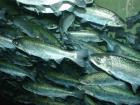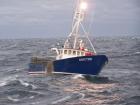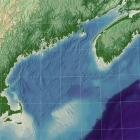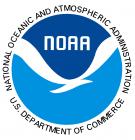Accountability Measure (AM): Fisheries management rules that prevent annual catch limits from being exceeded (i.e. prevent overfishing) and make corrections when fishing goes over the annual catch limit. They are mandated by the 2006 reauthorization of the nation’s primary fisheries law, the Magnuson-Stevens Act. AMs can be implemented during the fishing season to keep fishing within established catch limits—such as closure of specific areas or reduction in fishing effort—or after the season to correct any excesses that may have occurred, such as reducing the annual catch limit by the exceeded amount the following season.

Anadromous: An anadromous fish is born in freshwater , spends most of its life at sea, and returns to freshwater to spawn: examples in addition to salmon are shad, striped bass and sturgeon. A salmon travels extremely long distances in the sea, and often in its home river. It is particularly loyal to the individual river or tributary in which it is born and barriers inserted while a fish is at sea will prevent it from returning to its spawning ground and thus prevent spawning. Another small group of fish species are catadromous, which means they live most of their lives in fresh water but return to the sea to spawn. Eels are in this category. American eels converge from east coast rivers to a specific location far out in the Atlantic ocean to spawn.
Annual Catch Limit (ACL): The amount of a particular fish stock or stock complex that can be caught in a given year (usually measured in weight). In the U.S., the reauthorized Magnuson-Stevens Act requires that managers implement annual catch limits by 2011 on all managed fish stocks, based on recommendations of their scientific advisors, in order to end overfishing in U.S. waters.
Amendment 16: An update to the Northeast Multispecies Fishery Management Plan. This amendment establishes science-based annual catch limits for cod, haddock, flounder and other groundfish as required by the Magnuson-Stevens Act to end overfishing in U.S. waters. Amendment 16 also creates a voluntary sector system for the New England groundfish fishery. While this system has reduced bycatch, it has severely consolidated the amount of boats on the water, and it has redistributed a significant percentage of the fisheries total revenue into the hands of vessels over 75 feet long.

Bycatch: Sea life unintentionally caught while fishing for another species. This sea life is either brought to shore and sold, or discarded at sea, with much of the discarded sea life ultimately dying.
Catch Shares: A fisheries management strategy that divvies up the annual catch limit among permit holders, who can be individuals, businesses, and/or communities depending on the management plan. These parties can then claim exclusive right to their “quota” of fish and can either choose to catch those fish or trade that right to someone else. In a time of uncertainty around the future of ocean life, catch shares allows managers to keep close tabs on how much is actually being caught. Furthermore, by granting those who fish the right to their quota, proponents argue that catch shares discourage reckless fishing practices that could lead to a high bycatch rate and/or endanger the lives of the fishermen. On the other hand, many have argued that catch shares violate a basic principle of marine resources being a public good by handing fish stocks over to market forces. This, in turn, many fear will reward the biggest and most efficient vessels, box out traditional fishing communities, and lead to production system akin to America's agribusiness. Catch shares have been featured recently in the news both at the national and regional level. In 2010, President Obama announced a move towards catch shares as the country’s priority for fisheries management. 2010 also saw the implementation of a catch shares system known as sectors on the northeast groundfish stock (see Amendment 16).
Common pool: In New England, those who fish with a groundfish permit and do not join a sector are considered part of the common pool and are regulated by the effort-based management system, days-at-sea, that was in place prior to 2010.

Days-at-sea: A form of fisheries management that regulates catch by limiting the number of days that permitted fishing vessels are allowed to fish and the amount of fish vessels can bring in per day. Days-at-sea has been used to manage the groundfish fishery in New England since 1994. As of the implementation of sectors, a minority of fishing vessels continued to operate under days-at-sea management, and are referred to as “common pool” vessels.
Ecosystem-based management (area management): A system of fisheries management that uses while ecosystems as its basic units rather than isolated, single-species fish stocks. While most fisheries today are managed as individual fish stocks, there has been a push in recent years to think about fisheries as an interrelated ecosystem. The disadvantage to single-species management is that it easily neglects how fishing of one species might affect its predator or prey species in another fishery.
Essential Fish Habitat (EFH): The habitat fish require for spawning, breeding, feeding, or growth to maturity. Thus, the protection of EFH is crucial to supporting and maintaining healthy fish populations. The Magnuson-Stevens Act requires that Fishery Management Councils identify and take action to minimize, to the extent practicable, the adverse effects of fishing on EFH.
Fish stock: A geographic management unit for a portion of a fish population usually defined by a particular migration pattern, specific spawning grounds or because it is fished in a specific area. Single species are sometimes managed as several stocks based on biology, fishery activities, management practicalities or some combination of these. For example, Atlantic cod is currently managed as the Gulf of Maine cod stock and Georges Bank cod stock. Within these stock areas there may be distinct subpopulations. Sometimes, many stocks are managed as one unit as a "stock complex" such as in the New England groundfish fishery.

Fishery Management Councils: Eight regional councils established by the Magnuson-Stevens Act to develop fishery management plans for fisheries in federal waters. Once the plans are drafted, they are sent to NMFS for approval and implementation. Council members include representatives from each state fishery agency, the federal government, commercial and recreational fishing interests and the conservation community. The councils have staff that conduct technical and policy work and serve on the various committees of the council. Councils meet at least five times per year and various committees meet more frequently. By law, they are required to provide a forum for all parties with a stake in the fisheries to voice their opinions. (see NEFMC)
Fisheries Management Plan (FMP): Rules that regulate the fisheries managed by the federal government under the National Marine Fisheries Service. FMPs are amended based on new federal laws, including those passed in 2006 that require adoption of conservation measures, such as annual catch limits and accountability measures.

Georges Bank and Gulf of Maine ecosystem: Georges Bank is among the most productive ecosystems on the planet. It yields vast quantities of fish, supports marine mammals and other wildlife, and has functioned as a veritable engine of commerce for centuries for New England, the nation and Canada. Georges Bank forms the southern and eastern boundary of the Gulf of Maine, a semi-enclosed sea that is also renowned as one of the world’s richest marine ecosystems. It is bordered by Nova Scotia, New Brunswick, Maine, New Hampshire and Massachusetts.
Groundfish: Bottom-dwelling, or demersal, fish species such as Atlantic cod, haddock, flounders, hake and pollock. These species often share the same habitat and are managed together as a stock complex. Though groundfish spend much of their lives near the bottom, the eggs and larval fish live near the water surface and even adults move up into the water column at various times, such as when pursuing their food. In New England, groundfish are managed under the Northeast Multispecies Fisheries Management Plan.
Individual Transferable Quotas (ITQ): A form of catch shares management where a pieces of the annual catch limit are awarded to individual permit holders. These individuals can then buy, sell, or lease their quota as they see fit.
Magnuson-Stevens Act (MSA): The MSA is the law that governs fishing in federal ocean waters. In 2006, new requirements were passed to end overfishing in U.S. waters by 2011 through the use of annual catch limits based on recommendations of scientific advisors. The U.S. has jurisdiction over the waters from three to 200 miles off its shores. Beyond 200 miles are international waters. From zero to three miles is governed by individual states.
New England Fisheries Management Council (NEFMC): One of the eight regional fishery management councils established by the Magnuson-Stevens Act to develop fishery management plans for fisheries in federal waters, NEFMC is responsible for the management of regulated fish stocks in the New England region, including the Northeast multispecies groundfish complex. As such, NEFMC created and approved Amendment 16 to the Northeast Multispecies Fishery Management Plan.
National Marine Fisheries Service (NMFS): The federal agency in charge of the management, conservation and protection of living marine resources within the U.S. EEZ (Exclusive Economic Zone from three to 200 miles offshore). It is responsible for creating sustainable fisheries following the guidelines in the Magnuson-Stevens Act, assessing and predicting the status of fish stocks, and ensuring compliance with fisheries regulations. It is part of NOAA and is also referred to as the NOAA Fisheries Service. However, it is most often referred to as NMFS (pronounced "nymphs).

National Oceanic and Atmospheric Administration (NOAA): A government agency responsible for the regulation and protection of the atmosphere and marine resources. This federal agency is based in Washington, D.C. and falls under the Secretary of Commerce.
Northeast Multispecies Fishery Management Plan (NMFMP): The fisheries management plan that covers the Gulf of Maine Groundfish stock.
Overfished: An overfished population or stock is one that has been depleted so much that the yield to the fishery is compromised, possibly jeopardizing the future of the stock. The abundance of an overfished stock is too low to ensure safe reproduction and to support optimal levels of fishing. In the U.S., law dictates that a rebuilding plan is required for stocks that are deemed overfished. Populations usually rebuild, or grow, when fishing is reduced sufficiently.
Overfishing: The act of removing fish from a population faster than they can reproduce, which will thus deplete the population, or stock. Note that both healthy and depleted (i.e., overfished) populations can be subjected to overfishing.
Permit bank: A system in which states or other entities buy fishing permits and lease quota back to fishermen, often at below-market prices. This can help keep disadvantaged parts of the fleet (such as rural ports and small-boats) active and competitive under a market-based catch shares management plan.

Sectors: Voluntary, fishermen-run cooperatives that are allocated a share of the annual catch limit in a fishery. Members of a sector are responsible for how they use the group’s share of the catch. Sectors run under approved operations plans that detail catch monitoring and other key protocols. Starting in May 2010, the groundfish fishery in New England is managed under a voluntary sector system. While many sectors in New England are composed of vessels from the same community or those that land in the same port, this is not required according to Amendment 16.
Total Allowable Catch (TAC): Synonymous with annual catch limit. Most often used in relation to the New England groundfish fishery.
